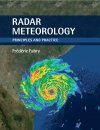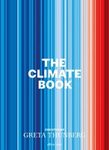![Radar Meteorology Radar Meteorology]()
Click to have a closer look
About this book
Contents
Customer reviews
Biography
Related titles
About this book
This practical textbook introduces the fundamental physics behind radar measurements, to guide students and practitioners in the proper interpretation of radar reflectivity, Doppler velocity and dual-polarization imagery. Operational applications are explored, such as how radar imagery can be used to analyze and forecast convective and widespread weather systems. Radar Meteorology concludes with an overview of current research topics, including the study of clouds and precipitation using radars, signal processing, and data assimilation. Numerous full-colour illustrations are included, as well as problem sets, case studies, and a variety of supplementary electronic material including animated time sequences of images to help convey complex concepts. Radar Meteorology is a valuable resource for advanced undergraduate and graduate students in radar meteorology and other related courses, such as precipitation microphysics and dynamics. It will also make a useful reference for researchers, professional meteorologists and hydrologists.
Contents
Preface
List of symbols
List of acronyms
1. Meteorology and radar
2. Fundamentals of weather radar measurements
3. Radar reflectivity and products
4. Reflectivity patterns
5. Doppler velocity information
6. The added value of dual-polarization
7. Convective storm surveillance
8. Monitoring widespread systems
9. Radar estimation of precipitation
10. Nowcasting
11. Additional radar measurements and retrievals
12. Cloud and spaceborne radars
13. What does radar really measure?
Appendix A. Mathematics and statistics of radar meteorology
References
Index
Customer Reviews
Biography
Frédéric Fabry is an Associate Professor at McGill University in Montreal, Canada, where he teaches topics in radar, meteorology, and the environment. He is also the Director of the Marshall Radar Observatory. His research covers various facets of radar meteorology, from technical aspects such as signal processing to applications of radar in hydrology and in numerical weather modeling, including more traditional radar meteorology research such as the characterization of the melting layer of precipitation. He was awarded the 2004 Canadian Meteorological and Oceanographic Society President Prize for the development of a technique to estimate the refractive index of air using ground targets.
By: Frédéric Fabry(Author)
256 pages, 130 colour photos and colour illustrations, 36 b/w illustrations
Advance praise:
"Professor Fabry has written an excellent overview of radar meteorology, which, unlike most other textbooks, emphasizes practical applications. It will be a welcome text for undergraduates and beginning graduate students who are interested in observations of mesoscale and convective weather phenomena, and a valuable reference for weather forecasters and researchers."
– Howard Bluestein, University of Oklahoma
"At last – a book on radar meteorology for the meteorologist. Professor Fabry's book adopts an application-oriented approach with a host of examples, allowing the meteorologist to analyse radar data in order to gain a unique insight into evolving weather systems, as well as the interplay of the dynamics and precipitation microphysics."
– Anthony Illingworth, Emeritus Professor, University of Reading
"Finally, a book which explains weather radar and radar meteorology with a combination of depth and breadth which is suitable for graduate students, undergraduates, and general meteorologists alike. Professor Fabry covers a very diverse array of topics, with the detail that most will want, and provides extensive references for aspiring specialists to dig deeper."
– Joshua Wurman, President and Founder, Center for Severe Weather Research, Boulder, Colorado



































